Every July, when the desert is at it’s hottest, driest, most brutal time, temperatures don’t really ever drop out of the 90s in rocky washes around Phoenix. This is a great time to visit a couple of tortoises that use the same cut out in a wash to keep in the shade. There are probably cooler spots, but these are where they are, and I’ve seen them for the last few years like clockwork, any day in July.
This one usually has a diamondback friend, though not this time around. He smells like a cow, which is how I found him the first time.
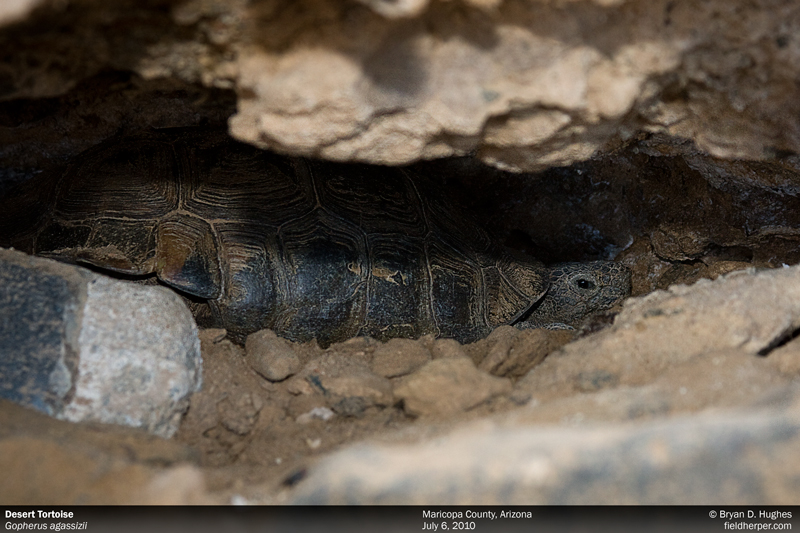
Desert Tortoise
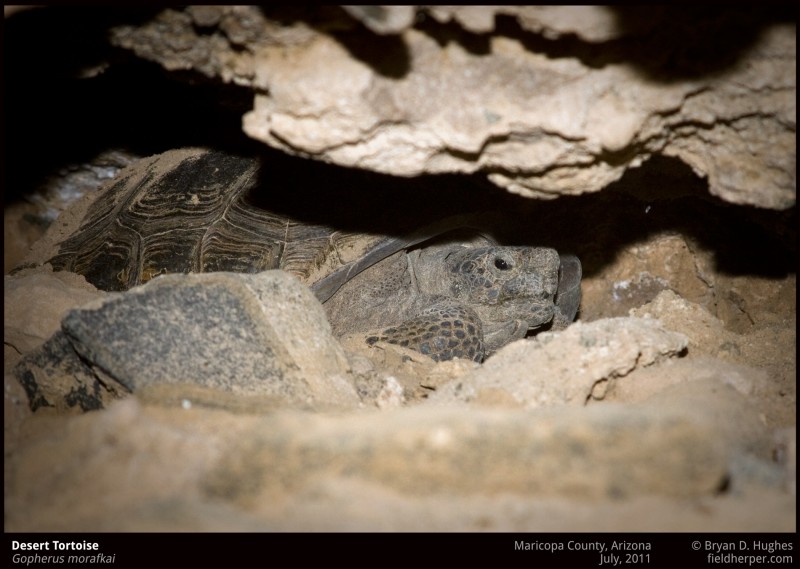
G-morafkai-1-070211
Tags: agassizii, desert tortoise, gopherus, tortoise
Posted in Behavior, Field Herping, Photography, Tortoises | No Comments »
This is one of many seen last summer … many seen that night actually. Way back in a hard-to-get-to wash at about 2am, we watched this diamondback on the crawl head up into the low branches of a tree, and sit. I’m not sure if this was in response to our being there, but either way, it was some behavior that I don’t see much, especially with this species.
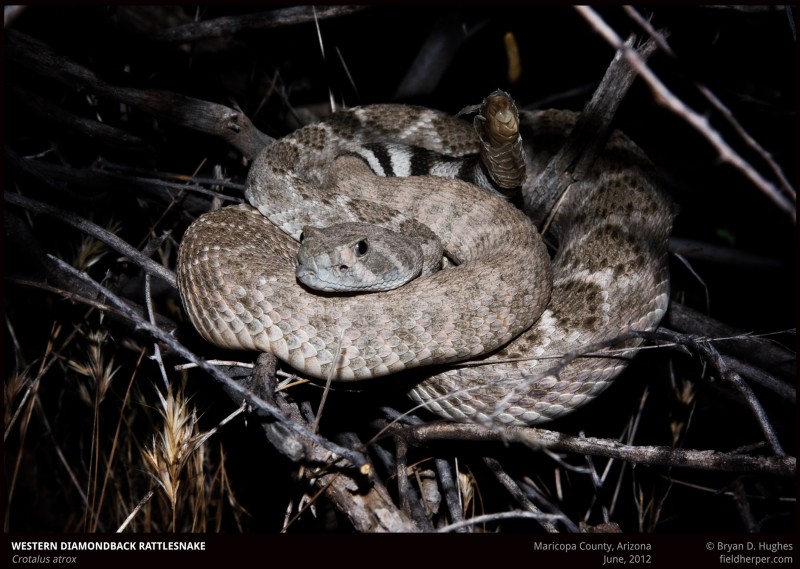
Crotalus atrox
Tags: atrox, Behavior, climbing, Crotalus, Diamondback, tree
Posted in Behavior, Field Herping, Photography, Snakes | No Comments »
No snakes today, though I find plenty in this area. There are some places where you end up going because you like just being there, regardless of it being a ‘good’ or ‘bad’ spot. This one is fortunately a good one, and has a lot of surprises for me. AZ Black Rattlesnakes and Mojave Rattlesnakes found within spitting distance of one another? Check. Pretty cool place, where I really don’t care much whether I am successful in the hunt or not.
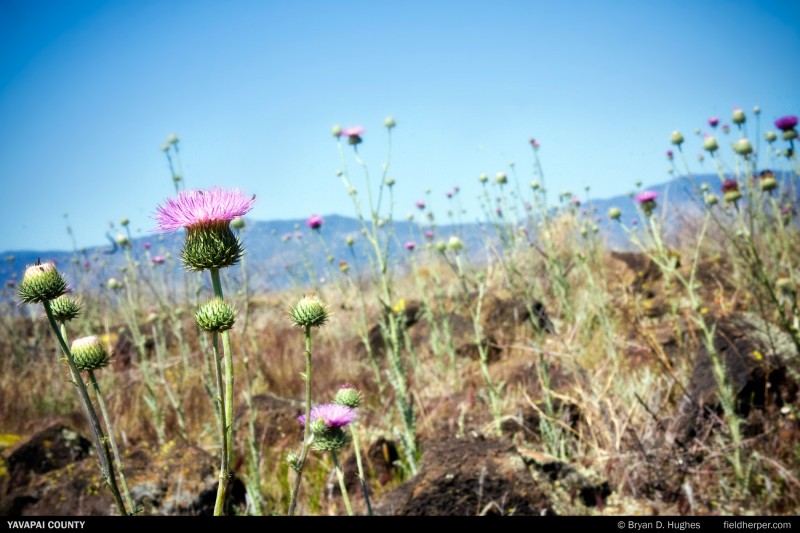
As far as you can see ...
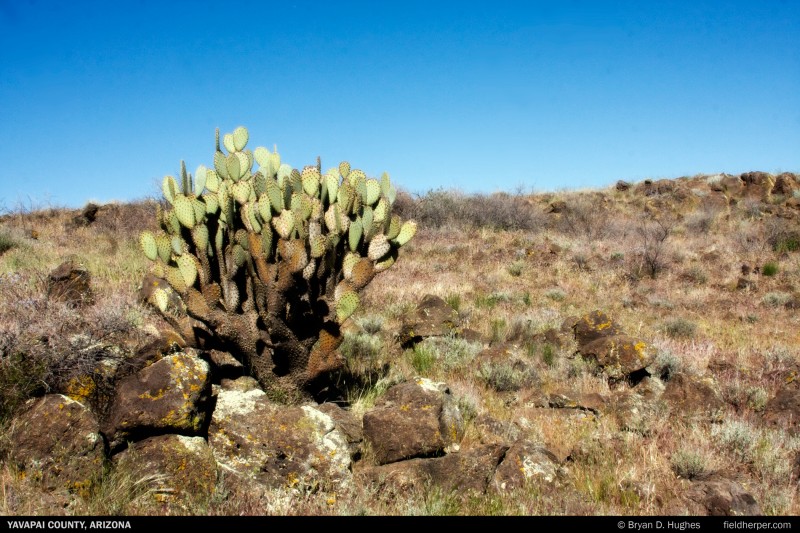
High Elevation Grasslands
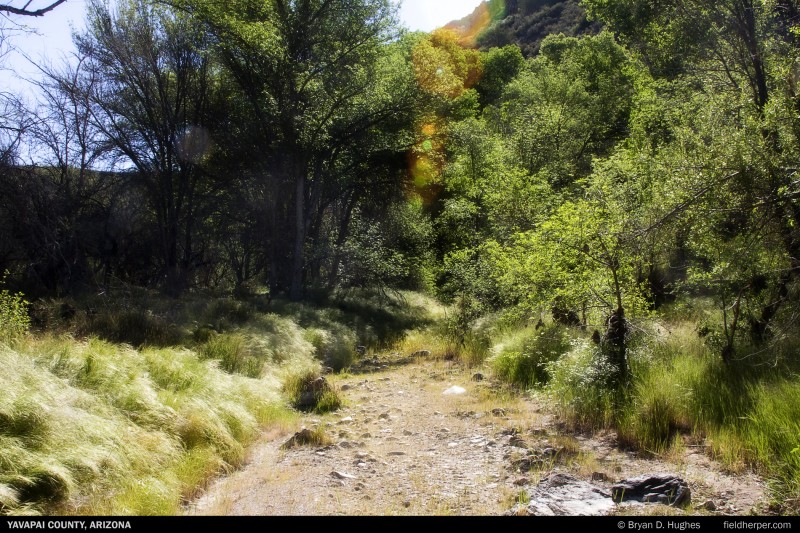
Heading into an oasis area
Tags: arizona, landscape, yavapai
Posted in Field Herping, Landscapes, Personal, Photography | No Comments »
Here’s another willardi from 2011, and to be honest I don’t remember anything about this one. I was fortunate that year and saw a bunch of them, and now I’m all mixed up. SO, with that admission: here’s a good example of that cool ridge that sets these guys apart from other US rattlesnakes. When in a spot between bunchgrass, even very experienced herpers can step right over one. I am sure I have done my share of just that.
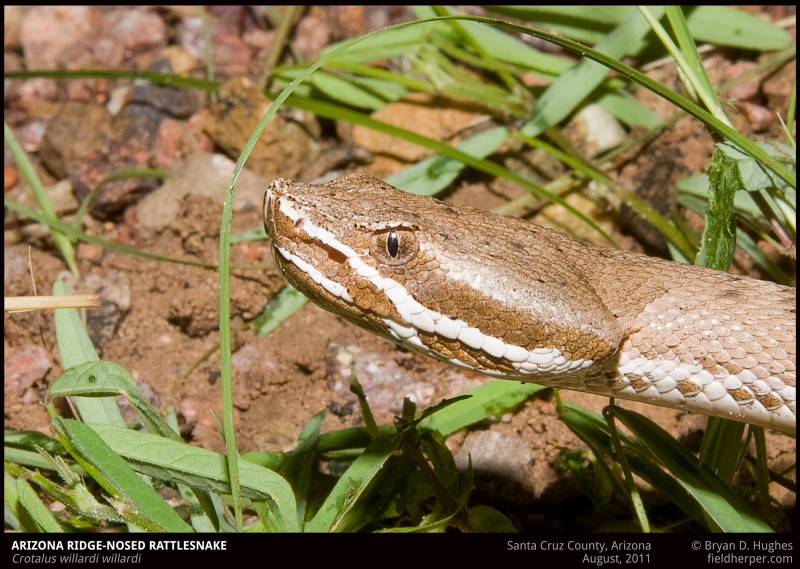
Ridge Nosed Rattlesnake
Tags: arizona, Crotalus, rattlesnake, ridge-nosed, ridgenose, willardi
Posted in Field Herping, Photography | No Comments »
On an evening out in Eastern New Mexico that was so windy that I could barely open the doors to my truck, I found a little prairie rattlesnake stretched out in the road. Perfectly flat against the warm surface in a place where few vehicles have any business, he was out of the bite of the wind. I was not, however, and I had a hell of a time collecting the thing to get a few shots out of the wind. Quite a bit of fuss for one viridis. Regardless, it was a target, and my first snake of the trip.
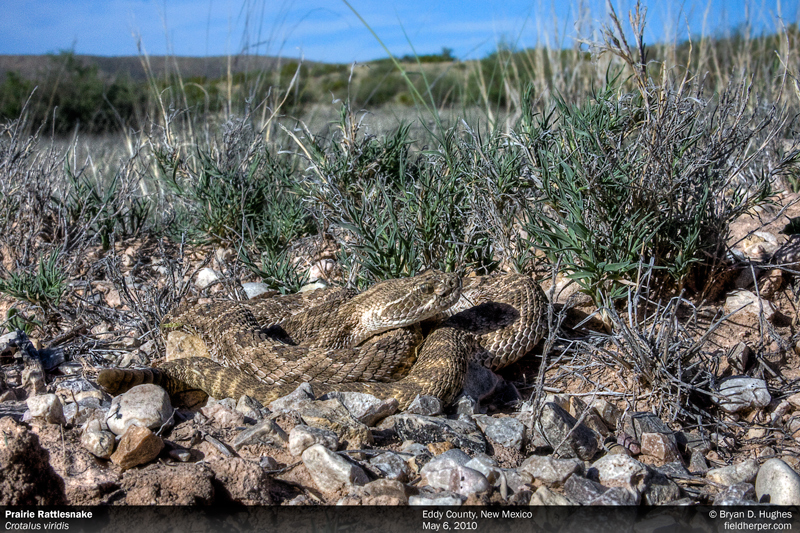
Crotalus viridis
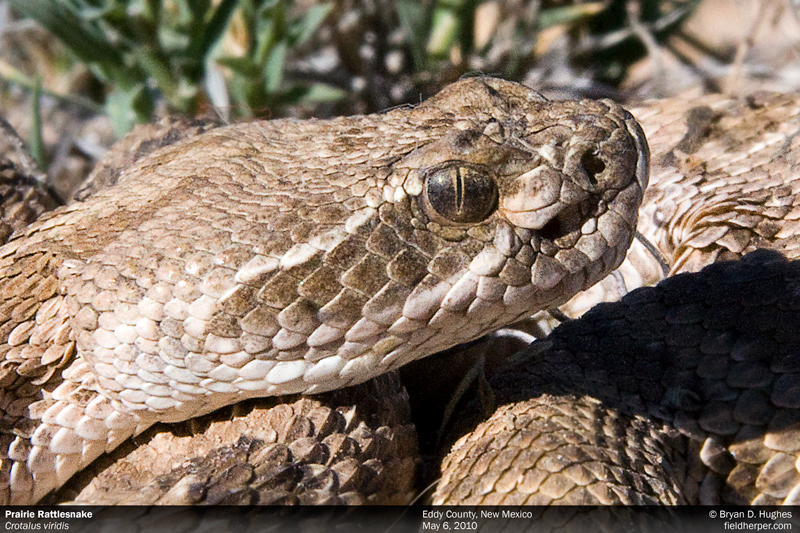
Prairie Rattlesnake
Tags: Crotalus, eddy county, new mexico, prairie rattlesnake, viridis
Posted in Field Trips, Photography, Snakes | 2 Comments »
While down in Texas, I met what became one of my favorite colubrids within seeing a few individuals. I knew that the Trans Pecos Ratsnake (or ‘suboc’, short for Bogertophis subocularis) looked cool, but I wasn’t expecting the cool attitude they have. The first I saw just sat there as I approached. When in-hand, there was no indication it was a wild snake … it just kept on slowly climbing, moving around and inspecting with huge blue-grey eyes.
We saw several on the trip, and I admit I took my favorite home with me; a lemon yellow beauty that is on his way to being a monster, if he keeps eating and shedding as he has since August. Here he is in the sun, about an hour before the photograph with the copperhead was taken.
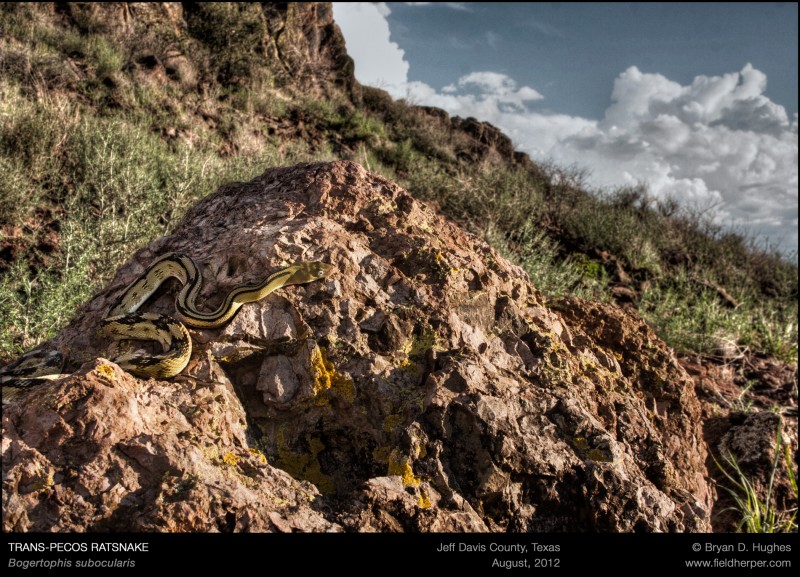
Bogertophis subocularis, the 'suboc'
Tags: Bogertophis subocularis, ratsnake, suboc, texas, trans-pecos
Posted in Field Trips, Snakes | 2 Comments »
While I’m on the subject of blurry, rather terrible pictures of whiptails I’ve found, I might as well get this one up. This is Eastern New Mexico’s version of the little desert lizards. Though they can be found about anywhere in the grassy hills North of the Guadalupe mountains, I saw the highest frequency to be in the islands of bunchgrass that pop up from the red oil sands North East of Carlsbad. They’re easy to find there, just follow the tracks!
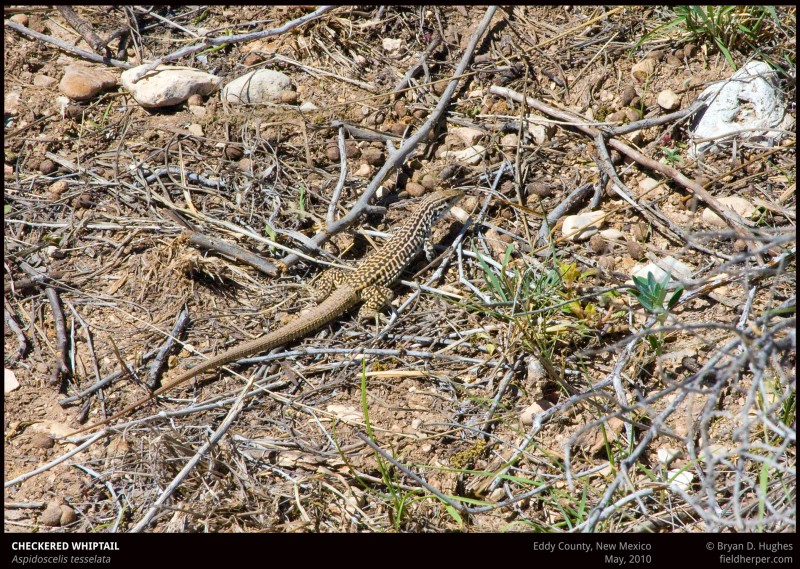
Aspidoscelis tesselata
Tags: aspidoscelis, checkered whiptail, eddy county, new mexico, tesselata
Posted in Lizards | No Comments »
Here’s one of the more common lizards around the Payson area. By common, I mean you can see them darting around in the landscaping between mini-malls and the like. Though they don’t really climb much, they do what they do very well, and have apparently adapted to thrive more or less throughout the entire city. I’ve even seen them grow very large in surprising parts of town, like the bushes on Whiskey Row, feeding on the mega-fed cockroaches and crickets that cruise the sidewalks in the early morning hours.
Here’s a little one; I’m sure some Yavapai County residents will recognize it. They’re very hard to photograph – even if they don’t notice you, they continually walk around nosing and pawing at the dirt. I had to circle this little guy for an embarrassing amount of time just to get this mediocre shot. For as common as they are, this is the first of these that I have posted to this blog.
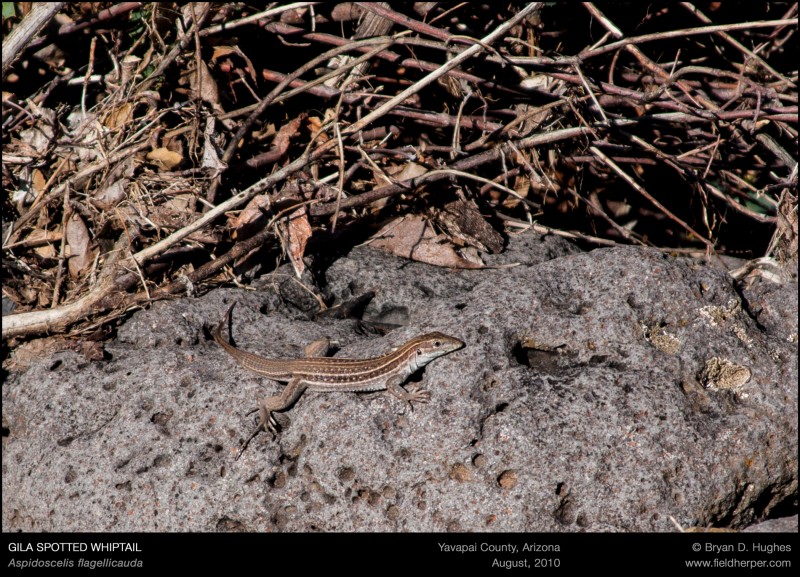
gila spotted whiptail
Tags: aspidoscelis, flagellicauda, gila spotted, whiptail
Posted in Lizards | No Comments »
Here’s just a little bit of variation: two fairly common looking glossy snakes. One of the cool things about these guys is that shovel-nosed face and recessed lower jaw, perfect for nosing around in soft sand looking for prey. Like any animal, they can have a fair amount of variation between them. These two are pretty typical examples of glossies from two types of habitat, both in the same county.
This first one is more typical of upper grasslands. Big, mostly brown, with less distinct coloration.
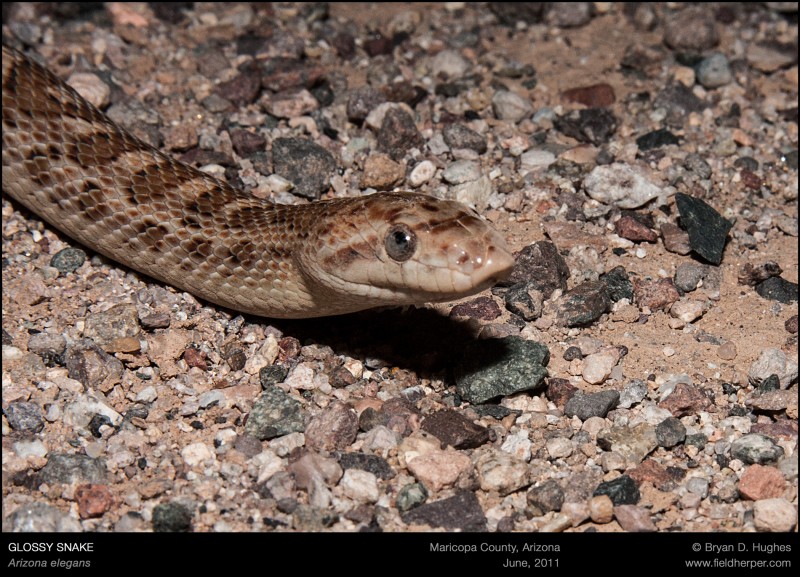
Glossy Snake
This one is from a little lower in the desert, out in the Colorado river desertscrub – a place you’d mistake for a dead zone if you didn’t know better. In my experience, they tend to be a little more vivid in color and contrast, especially the young ones. This one is an adult, and still has a lot of that nice, red coloration between the scales.
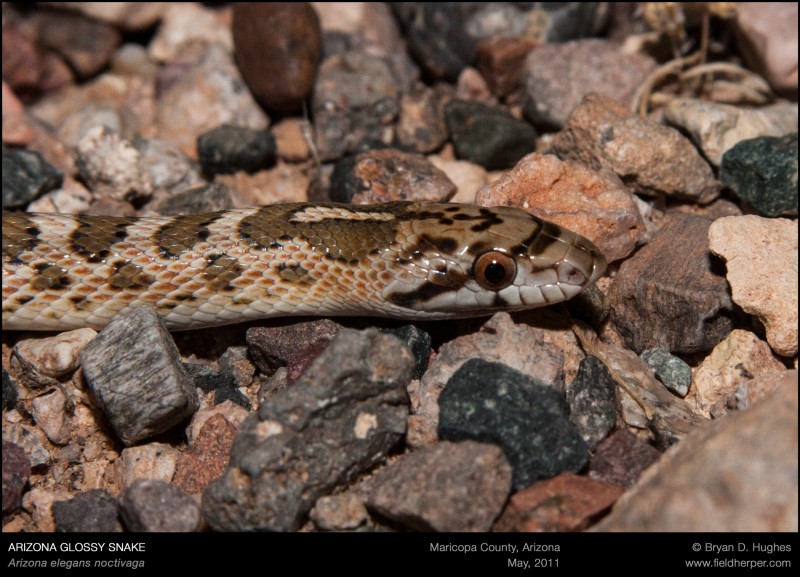
Arizona elegans
I’m not sure why, but for a few years, I saw very few of these … then suddenly they are everywhere. Last Spring they had to be one of the most ocmmon colubrids I found, aside from Spotted Leafnosed Snakes and Longnose.
Tags: arizona, elegans, glossy, snake
Posted in Snakes | No Comments »
In August I got a new job, which means I had an opportunity to take a week off and head to New Mexico to visit my parents. While there, might as well find some snakes! I took off a few days early and headed South to meet a friend and try for my first non-rattling pit viper. On the first night in Texas, in the Davis Mountains: a Trans-Pecos Copperhead, Agkistrodon contortrix pictigaster! I wish I could say I was the one that spotted it, but I’m not that kind of herper to split hairs over that part. This is what I wanted, an experience with it in habitat and a good photo session in the setting sun light.
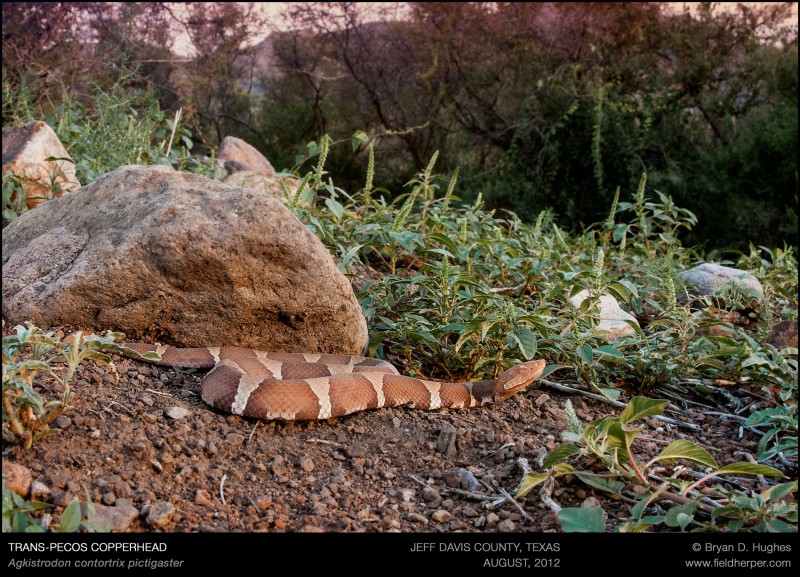
Copperhead!
Tags: Agkistrodon, contortrix, copperhead, davis mountains, jeff davis, pictigaster, texas, trans-pecos
Posted in Field Herping, Field Trips, Photography, Snakes | No Comments »
So I don’t get photographed a lot doing what we do, which is understandable and probably for the best, since there’s always something more interesting to get in the viewfinder. Regardless, some of my friends get bored sometimes, and things happen. Here are a couple from this year’s trip to Pennsylvania.
This first one is my nose pressed firmly on the back of my camera taking photos of at least 3 timbers hiding in a crack. I am sure there are at least 3 ticks on me at this particular moment, with their sweet lyme disease kisses.
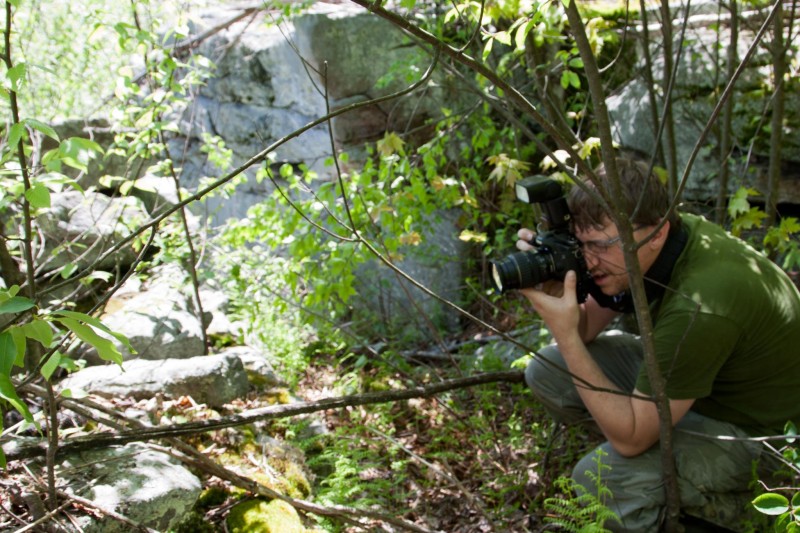
Heeere timbers!
From the same trip, this is my first meeting with the Nerodia genus, or watersnakes. We don’t have them here in Arizona, so I was more pleased than I should be to let this guy work his anticoagulant saliva into my hand; just to make sure it works. Guess what? It does. I bled for about a half hour from just a few tiny holes.
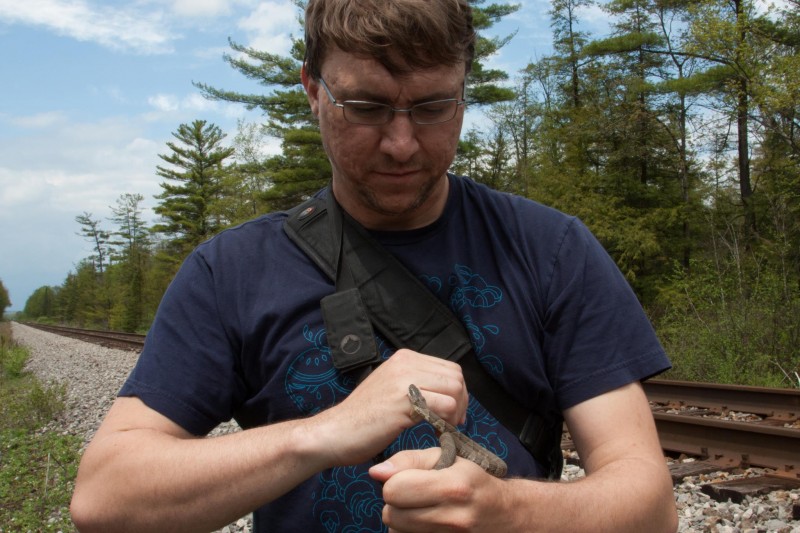
nice to meet you too, jerk.
Once again I find myself way behind in the whole posting thing, so I’ll try to catch up in the off season. Here it goes!
Tags: bryan, me, nerodia, pennsylvania, ticks, watersnake
Posted in Field Trips, Personal, Snakes | No Comments »
It’s so dry out there right now, most of the snakes in the Phoenix area haven’t seen a drop of water since December. I share when I can.
Tags: Crotalus atrox, phoenix, rattlesnake, snake, water, western diamondback
Posted in Field Herping, Snakes | No Comments »


















